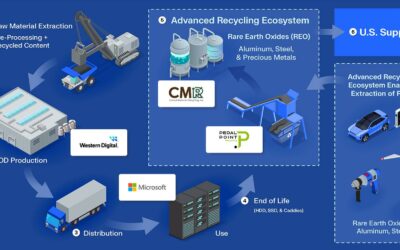This post was originally published on Climate Links
Youth Test Innovations to Increase Water-Use Efficiency and Build Climate Resilience in Central Asia
jschoshinski
Thu, 06/13/2024 – 15:24
The USAID Regional Water and Vulnerable Environment Activity is strengthening transboundary cooperation on water resources and building resilience to climate change in Kazakhstan, the Kyrgyz Republic, Tajikistan, Turkmenistan, and Uzbekistan. By engaging school children in piloting green technologies for efficient water use, the Activity is helping youth spark the uptake of innovative practices in their communities to increase water security and climate change adaptation in Central Asia.
Image

The Challenge
Five major rivers flow through Central Asia, nourishing and connecting people and ecosystems along their routes. Most of the region is arid or semi-arid with a highly variable climate, making all five countries susceptible to climate change. Increasing temperatures and shifting rain patterns are accelerating glacial melt and reducing snowpack, which are critical sources of fresh water in the region. If climate change continues on its present course, river flow will ultimately decline in the coming decades, resulting in water deficits during the growing season.
The region has already experienced the effects of poor water management. The Aral Sea has lost 90 percent of its water over the past 50 years due to the overuse of water for agricultural irrigation. In 2020, the combined population of the five Central Asian countries surpassed 75 million, and according to UN projections, it will reach 95 million by 2050, driving increased demand for water, food, and energy. The combination of climatic and hydrological changes and rapid population growth is pushing the region towards water insecurity.
Tapping Youth-led Innovation
To address the need for efficient water use and environmental protection in Central Asia, USAID is working with governments, academia, civil society, and education partners to demonstrate innovative methods to reduce water consumption and adapt to climate change. Over 50 percent of the population in Central Asia is under 30 years old. With a high capacity for scientific and technological innovation, these young people are creating opportunities for resilient and sustainable development.
The Activity partners with youth-focused non-profit organizations in the Fergana Valley, a once lush and fertile region that extends across parts of eastern Uzbekistan, the Kyrgyz Republic, and Tajikistan. To counter the effects of increasing water scarcity in the region, the Activity provided grants to three organizations to promote environmental stewardship within their communities. Together, these organizations have formed 56 Green Patrols across 31 school districts with a combined membership of more than 1,181 high school students, over half of whom are girls.
In a unique transboundary collaboration, these Green Patrols research low-cost technologies to improve water-use efficiencies. They select methods to pilot test technologies through a learn-by-doing approach involving teachers, families, local authorities, and community members. They also have a lot of fun along the way.
Image

Learning Lessons for Life
The Green Patrols in all three countries collaborated to develop common training materials focused on their shared challenges in the Fergana Valley. The Green Patrol organizers trained 51 teachers in the service area on how to use these materials in the classroom to cover climate change, pollution, water security, climate-smart agriculture, and other topics.
Teachers deliver these lessons through a unique combination of games, competitions, and practical applications. The students work collaboratively to select the topics they want to explore and then study those topics in settings such as riverbanks and community gardens. In the Kyrgyz Republic and Uzbekistan, some students are growing rose bushes and vegetable gardens using a simple drip irrigation system sourced by nearby rainwater collection tanks. At other schools, students are testing solar-powered water pumps and poly-greenhouses. In Tajikistan, Green Patrols have organized clean-up days along the banks of the Syr Darya River and interactive public demonstrations on simple water purification techniques, awarding prizes to the most effective teams.
Image

Green Patrols also provide opportunities for peer-to-peer exchange through summer camps in each country. In June 2023, the Activity organized an in-person conference in Tashkent, Uzbekistan, where young people could share ideas and experiences from working with fellow students and local communities. Together, they identified best practices for future Green Patrols and set the stage for a greener future in the region.
Image

Engaging Youth for a Brighter Future
Green Patrols demonstrate how youth can influence local communities and authorities to adopt water-efficient technologies and increase environmental protection. As Anara Eginaliyeva, Director of FTI Bishkek (an Activity grantee), points out, “Too often students feel there is nothing they can do to create change in their worlds. Green Patrols help them understand that they have an important role to play.”
Engaging youth is critical to changing practices within communities and building a brighter future. Support for Green Patrols has grown in the relatively short time they have been active, and all the schools involved intend to continue and expand the program beyond the current support from USAID. This youth-led movement has enormous potential for the entire Central Asia region as countries navigate the impacts of climate change.
To read more about USAID in Central Asia and transboundary integrated water resource management, please visit and join the Activity’s Facebook page. You can find further tools and research on the Activity’s Community of Practice platform hosted by the Regional Environmental Centre for Central Asia.





0 Comments